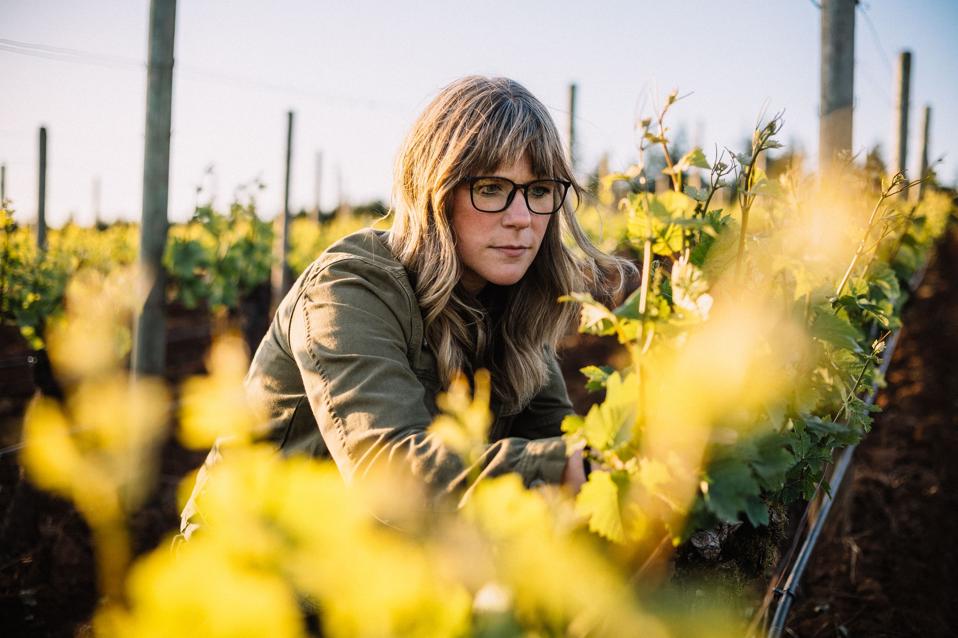The past few years have been major times of flux for the wine industry. Wine seemingly survived the pandemic but is currently taking a hit from younger generation’s lack of interest, and the corporate landscape is constantly changing with new sales and acquisitions in among Oregon wine brands.
The wineries of Oregon’s northern Willamette Valley have long hoed their own path. Many wineries have struggled to maintain their signature styles with global warming and others have been snapped up by corporate entities. This is particularly true for California corporations, for whom the land and labor are much less costly in Oregon.
One of the classic brands that has maintained the same style, on multiple levels, is Archery Summit. The winery produces 10,000-cases from its Dundee Hills Estates, making it not exactly small but certainly not large enough to hit the big numbers.
While the winery has gone through a number of owners, from the original Olympic skier Gary Andrus to the current Napa-based Crimson Wine Group corporation, a series of dedicated winemakers have strived for it to maintain its own taste profile.
I had the pleasure of meeting the brand’s new winemaker, Kim Abramson, who through sheer dedication, energizer-bunny focus and copious research is doing everything she can to keep the brand on track. All responses are edited and condensed for clarity.
Liza B. Zimmerman (L.B.Z.): What appealed to you about taking on such an already successful brand?
Kim Abramson (K.A.): After helping build one of Oregon’s most recognized brands, Lingua Franca, over the past eight years, I was presented with the opportunity to work with five estate vineyards in the heart of the Dundee Hills. It felt like the golden ticket. I now have the privilege of building on Archery Summit’s rich history, while guiding it into its next great chapter.
L.B.Z.: How have you worked to keep Archery Summit’s identity intact?
K.A.: Four months in, I’ve learned that the most important thing is patience. I can’t fully understand every nuance of the brand overnight. Right now, I’m asking questions: why, how, what and when.
L.B.Z.: What are some of the biggest challenges about overseeing a brand that has had multiple winemakers?
K.A.: In Archery Summit’s history, there have been five winemakers, after founder Gary Andrus.
When I first arrived, I wondered how these changes have shaped the wines. But as I’ve tasted through older vintages, it’s clear that the truest voice comes from the place and the vintage.
The winemaker is the guide, but the vineyard tells the story. My goal is to raise that voice even higher and reflect the identity of our five estate vineyards. I don’t see the list of previous names of owners as a challenge, but as an opportunity to learn from the past. I get to see their decisions in the glass, repeat certain experiments, try new approaches and always be grounded by the same vineyards that have been here all along.
L.B.Z.: How can new inspiration and ideas enhance the story of an established brand?
K.M.: My role is to bring fresh energy while honoring what already works. I’m not here to reinvent the wheel, but to refine it. The constant questions I ask—about process, timing, intention—are what lead to meaningful action. There will be successes, there will be failures, but both will push us forward. Archery Summit’s 30-year history gives me a foundation; my job is to extend the lens into the future.
L.B.Z.: Is it a winemaker’s job to maintain the status quo or help a brand evolve?
K.A.: Maintaining the status quo is how you get left behind; evolution is essential. I’m not advocating for dramatic shifts, but for a constant pursuit of asking why we do what we do and how we can do it better. Nature is our greatest partner, and she is never static. We have to adapt or risk irrelevance.
Every winemaker naturally brings subtle shifts, such as changes in oak use, adjustments in picking dates and fresh ideas in the cellar. I see wine as a puzzle where every piece must fit together. I don’t expect my style to swing wildly from my predecessors, but rather to highlight the strengths of the Oregon wine brands that came before me. My hope is that our wines always speak first of our vineyards, with the winemaking team serving as the frame that holds that picture in place.

